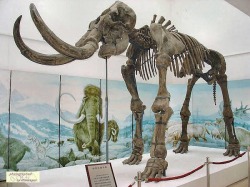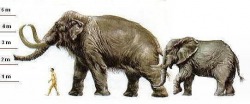Songhua River Mammoth, the Biggest Elephant Ever

Full Name and Meaning: Mammuthus sungari, "Sungari mammoth"
Common Name(s): mammoth
Other Names: N/A
Time: Middle Quaternary (Early - beginning of Late Pleistocene), 280,000 years ago
Locality: northern China
Diet: herbivorous, mostly grasses
Length: 30 ft. (9 m.) long, 17 ft. (5 m.) tall
Weight: estimated 10 tons (9 metric tons)
General Information

The Songua River Mammoth, Mammuthus sungari, evolved approximately 280,000 years ago from smaller Siberian relatives. All that can be known of the Songhua River Mammoth can be assumed from studies of other mammoths of which more specimens are known, such as the Woolly Mammoth or Columbian Mammoth. Three authentic specimens indicate that the Songhua Mammoth is the largest elephant ever. It was originally described in 1959 by M. Z. Zhou.
Assumptions
It can be assumed that much of the Songhua Mammoth's behavior is similar to, if not the same as, the behavior of better known Woolly Mammoths. Songhuas had long, curving tusks like woollys. Based on the frozen remains of woollys, they appear to have primarily fed on grasses. Though Songhuas may not have lived in the same environment as woollys, their tundra-dwelling relatives are believed to have used their tusks to sweep away snow to expose grass. Depending on the environment, Songhuas may have had a similar or radically different feeding strategy. Based on the shape of the tusks, Songhuas more likely had feeding habits more akin to modern elephants, grabbing leaves and grasses with its trunk and guiding them to its mouth.
